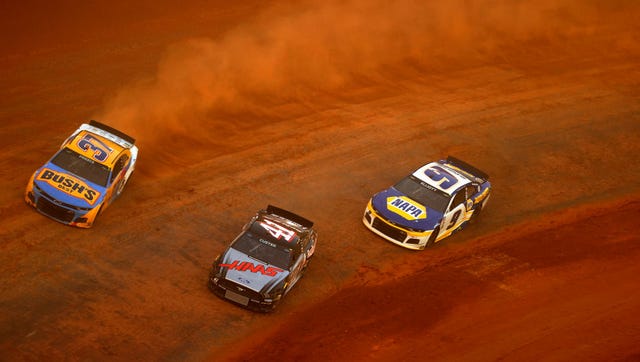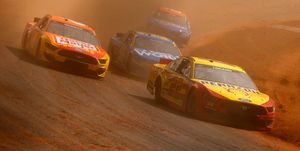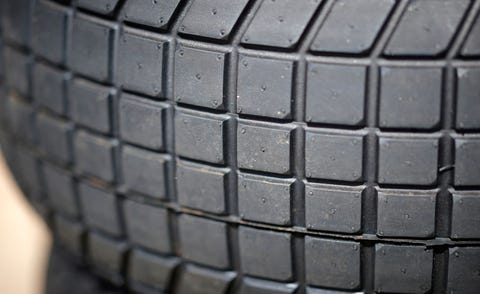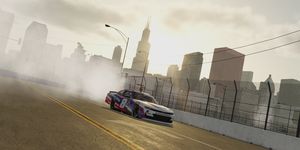Due to unexpected extreme tire wear during practice on Friday, NASCAR has added two competition cautions and increased the number of tires available to Cup Series teams during the Food City Dirt Race on Sunday at Bristol Motor Speedway.
The decision was made after the sanctioning body consulted various teams, track officials and the tire suppliers at Goodyear.
Essentially, there will be a caution every 50 laps in the 250-lap feature to allow teams to change tires. The breaks will also allow additional time for track preparation throughout the race.
This is how the race will be contested on Sunday:
During both practice sessions on Friday, several teams reported blisters and cording 20 laps in a run. At that pace, the race could have devolved into a series of tire failures, especially during the final 100 lap scheduled stage.
NASCAR’s senior vice president of competition, Scott Miller, says the changes will prevent tire failures from dictating the outcome of the race.
“This is obviously something we haven’t done in (the Cup Series) in 50 years and we knew … with the character of this track, that we could be presented some things we needed to adjust.
“Based on practice yesterday, higher than anticipated tire wear and y’all saw the dust and everything. So, two things: It gives us more opportunity to prepare the track during these breaks and ensures that the story will be about the racing — and trying to ask the tires to do more than they can isn’t in the best interest of anybody.”
Stewart-Haas Racing rookie Chase Briscoe, a former dirt Sprint Car regular and 2018 Eldora Dirt Derby winner, said his was one of the teams that experienced severe tire wear and endorsed the idea of additional stage breaks.
That was especially important since pit crews are not being used for this race.
“I think we probably need to do something,” Briscoe said. “Our car, 20 laps and we’re already showing cords. They’re just in a tough box because there’s no pit crew here, so if something happens under green, you’re in a tough situation.
“Me, personally, I would like to see something halfway through the final stage, cut that stage in half, and I think it would be better for the teams. You see in Sprint Car racing where guys are running on a rubbered down track and blowing tire after tire and you don’t want to see that here. Splitting it down the middle wouldn’t be a terrible thing.”
Hendrick Motorsports No. 24 crew chief Rudy Fugle seconded that opinion.
“I think we need the tires,” Fugle said. “Without the pit crews here, we need the caution to break it up and make it even.
“A lot of different things can go into that, but I just think 100 laps is stretching it right now. Unfortunately, that’s the way this track is right now. It could get better or it could get worse too.”
Other drivers, like Denny Hamlin and Ryan Preece advocated for a tire management race where drivers would have to save the traction of their tires over the final 100 laps, but Miller said that wasn’t feasible based on the data NASCAR was provided.
“(It was) widespread enough to where it certainly became a concern,” Miller said. “As with any wear, the way that the drivers are actually driving the car and their aggressiveness on the throttle contributes to that, but even the ones that went out in the second practice (Friday) and tried to manage it more than they normally would were still kind of the side of high wear. We need this show to be great, so we need to err on the side of caution.
“Track prep is a wildcard in all of this because that’s kind of unpredictable. It’s nice to think that you can prepare the track different, but when it gets windy or sunny or its overcast, that’s going to present a different kind of track condition no matter how hard we try. Just to make sure we were on the good side of things, all of those things led to the decision that we did.”
Briscoe also suggested on Friday night that NASCAR needed to keep moisture on the upper groove.
“I feel like if they would just go out there and till the top three quarters of the racetrack, and really water it and pack it in, we’d be running up there instead of running on the bottom,” Briscoe said.
Miller indicated that they will use the addition competition cautions to do just that.
“We really feel like that with the breaks that we have built in with this sort of change in format that we’ll be able to stay ahead of the dust and keep water in the top,” Miller said. “That’s the key, keep water in the top to allow the track to keep getting wider and wider as we go. When it gets super dusty up there, they just can’t can’t go up there, but if we keep that moist, than the racing groove will widen out and give us our best shot at having a fantastic finish.”
Source: Read Full Article





